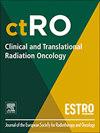Brachytherapy: Perspectives for combined treatments with immunotherapy
IF 2.7
3区 医学
Q3 ONCOLOGY
引用次数: 0
Abstract
Combining brachytherapy with immunotherapies, particularly immune checkpoint inhibitors (ICIs), is a promising approach for potentiating both local control of the tumor and fully exploiting the synergies between pharmaceutic immunomodulation and radiotherapy. Compared to other radiotherapy techniques, BT has a potential to better spare lymphatic drainage areas and gut microbiota, thus reducing the immunosuppressive effects of radiation therapy. In addition, it delivers a broad range of doses due to inherent dose inhomogeneity within the implanted volume. This variability increases the probability that immune infiltrates would be activated, particularly since the optimal dose for immune activation is not yet firmly established. Even if preclinical models show that radiotherapy can stimulate immune responses, it can also induce toxic effects on immune effectors and combination trials show conflicting outcomes. There is a need for refining radiation modalities to enhance immune potentiation. The dosimetric specificities of BT may offer various advantages and should be explored further. Scarce clinical data on combining brachytherapy with ICIs in advanced cancer suggest potential benefits, with case reports of complete local responses and abscopal effects. However, validation requires a large number of patients in randomized clinical trials for which ideal design is discussed. In parallel with ongoing clinical developments, there is a need to refine preclinical models in order to better analyze the specific biological effects involved in BT, in light of immunomodulatory systemic treatments.
近距离放射治疗:与免疫治疗联合治疗的前景
将近距离放疗与免疫疗法,特别是免疫检查点抑制剂(ICIs)相结合,是一种很有前途的方法,可以加强肿瘤的局部控制,并充分利用药物免疫调节和放疗之间的协同作用。与其他放疗技术相比,BT有可能更好地节省淋巴引流区和肠道微生物群,从而减少放射治疗的免疫抑制作用。此外,由于植入体积内固有的剂量不均匀性,它提供了广泛的剂量范围。这种可变性增加了免疫浸润被激活的可能性,特别是因为免疫激活的最佳剂量尚未确定。即使临床前模型显示放射治疗可以刺激免疫反应,它也可以诱导免疫效应器的毒性作用,联合试验显示出相互矛盾的结果。有必要改进辐射方式以增强免疫增强作用。BT的剂量学特异性可能提供各种优势,应进一步探索。在晚期癌症中,很少有临床数据表明近距离治疗与ICIs联合治疗有潜在的益处,有病例报告显示局部完全缓解和外显效应。然而,验证需要在讨论理想设计的随机临床试验中进行大量患者。与正在进行的临床发展同时,有必要完善临床前模型,以便根据免疫调节系统治疗更好地分析BT所涉及的特定生物学效应。
本文章由计算机程序翻译,如有差异,请以英文原文为准。
求助全文
约1分钟内获得全文
求助全文
来源期刊

Clinical and Translational Radiation Oncology
Medicine-Radiology, Nuclear Medicine and Imaging
CiteScore
5.30
自引率
3.20%
发文量
114
审稿时长
40 days
 求助内容:
求助内容: 应助结果提醒方式:
应助结果提醒方式:


